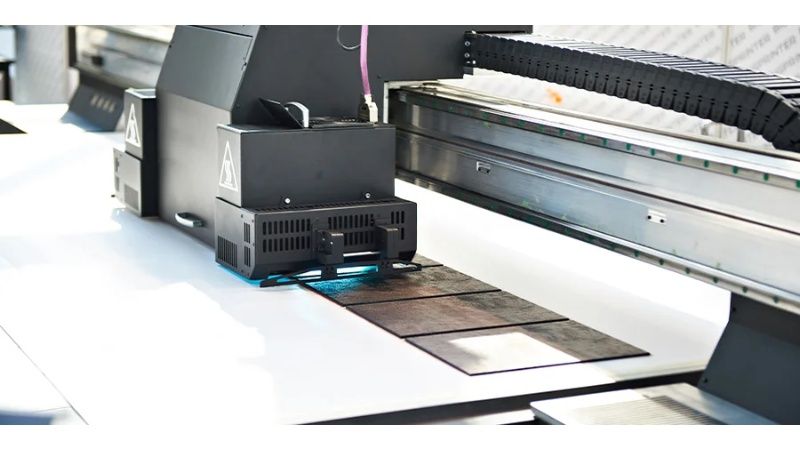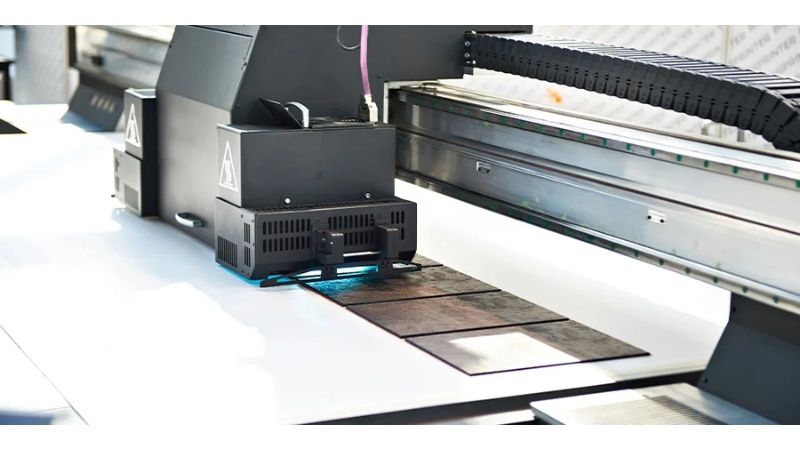UV (ultraviolet) machines are specialized equipment that use ultraviolet light to initiate a chemical reaction, typically curing or drying inks, coatings, adhesives, and other materials. These machines are integral in industries such as printing, electronics, automotive, packaging, and healthcare.
The concept of UV curing emerged in the mid-20th century, offering a faster, cleaner, and more energy-efficient alternative to traditional drying or curing processes. Today, UV machines are essential in production lines requiring quick turnaround times, high-quality finishes, and reduced environmental impact.
UV technology has evolved over the years from mercury-based lamps to modern LED UV systems, which are safer, more sustainable, and require less maintenance.
Why UV Machines Are Important Today
UV machines play a critical role in modern manufacturing and industrial operations. Here’s why they are gaining importance:
-
Faster Processing: UV curing takes seconds compared to minutes or hours in traditional thermal processes. This efficiency reduces production time.
-
Improved Product Quality: UV curing delivers smoother finishes, higher resistance to scratches, and better durability.
-
Energy Savings: Especially with LED UV systems, energy consumption is significantly lower than with heat-based systems.
-
Eco-Friendly Alternatives: UV systems reduce volatile organic compound (VOC) emissions, aligning with global environmental goals.
-
Wider Applicability: From printing to 3D modeling, UV machines are adaptable across materials like glass, plastic, wood, and metals.
Who benefits?
-
Manufacturers needing quick and clean curing processes.
-
Packaging and label producers requiring instant drying for high-volume jobs.
-
Electronics industry where precision and material integrity are crucial.
-
Healthcare and medical device producers using UV for sterilization and bonding applications.
Recent Developments and Trends
The UV machinery industry is experiencing notable changes and technological improvements. Here are some recent updates:
-
LED UV Systems on the Rise: As of 2024, over 60% of new installations globally are LED-based. These systems have a longer lifespan (up to 20,000 hours) and produce less heat.
-
Integration with Automation: Many UV machines are now equipped with sensors and software that monitor curing in real time, ensuring precision and reducing waste.
-
Adoption in 3D Printing: UV-curable resins are increasingly used in 3D printing. The global 3D UV printing market is expected to grow by 15% annually through 2028.
-
Sustainability Focus: Companies are shifting toward solvent-free UV inks and adhesives to meet sustainability targets and reduce emissions.
-
Digital UV Printing: This technique allows variable data printing (e.g., QR codes, barcodes) and has become essential in labeling and packaging industries.
| Trend | Impact |
|---|---|
| LED UV replacing mercury | Safer, cooler, and more eco-friendly |
| Smart controls | Higher efficiency and quality monitoring |
| Green chemistry | Reduced environmental footprint |
| Custom printing | Mass personalization and flexibility |
Rules and Regulations Around UV Machines
UV machines, especially those used in industrial environments, must comply with several safety and environmental regulations. Depending on the country or region, the following considerations often apply:
Safety and Emissions
-
Occupational Safety: UV light exposure can be harmful to skin and eyes. In countries like the U.S., OSHA (Occupational Safety and Health Administration) mandates shielding and safety interlocks for UV equipment.
-
European Directives: In the EU, machines must comply with CE marking standards, ensuring they meet health, safety, and environmental protection directives.
-
RoHS Compliance: UV curing systems, especially those with electronic components, must conform to Restriction of Hazardous Substances rules.
Environmental Policies
-
VOC Limits: Many governments set limits on VOC emissions. UV-curable products are generally compliant, making them suitable for eco-sensitive industries.
-
Mercury Phase-Out: Countries including India, Canada, and those in the EU are phasing out mercury-based UV lamps under the Minamata Convention on Mercury.
Waste Disposal
-
Lamp Disposal: Mercury UV lamps are considered hazardous waste. Specialized recycling procedures are required.
-
Electronics Compliance: Disposal of UV system parts may be regulated under e-waste management rules (e.g., WEEE directive in Europe or E-waste Rules 2022 in India).
Helpful Tools and Resources
Professionals working with or evaluating UV machines can benefit from a range of digital tools and industry resources:
Online Calculators and Tools
-
UV Dose Calculators: Tools like the Excelitas UV Dose Calculator help determine required energy levels for curing.
-
Cost Estimators: Some manufacturers provide calculators to estimate energy usage and cost savings with LED UV vs. traditional systems.
Websites and Databases
-
RadTech.org: An industry association promoting UV/EB technologies, offering webinars, case studies, and market data.
-
EPA.gov: U.S. Environmental Protection Agency resources on VOC compliance and green alternatives.
-
CE Marking: Official information on machine safety and certification requirements in the EU.
Industry Reports
-
“Global UV LED Market Outlook 2024–2030” – Available through research portals such as Statista, MarketsandMarkets, and ResearchAndMarkets.
Standards and Guidelines
-
ANSI/IES RP-27: Standards for photobiological safety of UV devices.
-
ISO 21348: Defines UV spectrum ranges used in industrial processes.
Frequently Asked Questions (FAQs)
Q1: What is the difference between mercury and LED UV machines?
A1: Mercury UV machines use arc lamps that emit a broad spectrum of UV light but generate more heat and require warm-up time. LED UV systems, in contrast, use solid-state diodes that emit a narrow UV range, operate instantly, run cooler, and are more energy-efficient.
Q2: Are UV curing machines safe for operators?
A2: Yes, when used with proper shielding, ventilation, and safety interlocks. UV light can harm skin and eyes, so personal protective equipment (PPE) and machine enclosures are essential.
Q3: What materials can be cured with UV machines?
A3: UV machines cure inks, adhesives, coatings, and resins on materials like paper, plastic, metal, glass, wood, and fabric. They are especially useful in packaging, electronics, and medical devices.
Q4: How long does UV curing take?
A4: Most UV curing processes take between 1–10 seconds, depending on material thickness, ink/resin type, and light intensity.
Q5: Do UV machines require special inks or resins?
A5: Yes. Only UV-reactive inks, coatings, or adhesives will cure under UV light. These materials contain photoinitiators that activate under specific UV wavelengths.
Final Thoughts
UV machines are a cornerstone of modern manufacturing, bringing speed, precision, and sustainability to a range of industries. As LED UV systems continue to replace older technologies, and as regulatory bodies push for safer and greener operations, UV machinery will likely become even more widespread.
Understanding the types, uses, and compliance requirements can help businesses choose the right UV system and ensure safe, effective operations. Whether you're in printing, electronics, or packaging, UV curing technology offers clear advantages when used responsibly and with proper technical guidance.

